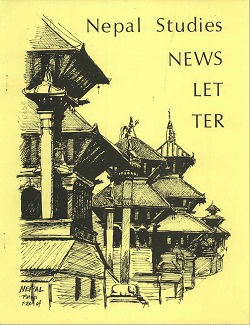Author Biography
Pascale Dollfus is a French researcher affiliated to CNRS’s Centre for Himalayan Studies in Paris. A social anthropologist (PhD Paris X – Nanterre Univ. 1987), she has worked since 1980 in the western Indian Himalayas: in Ladakh with both sedentary farmers and nomadic pastoralists, as well as in Spiti and Kinnaur. Since 2010 she has been researching the Shertukpens, a small population in Arunachal Pradesh, at the opposite end of the Himalayan range. Her main topics are: kinship and social organization, local religion and religious specialists, collective rituals and festivals. She has penned five books, four edited volumes or journals, and more than sixty articles and book chapters
Abstract
Among Buddhist religious specialists in Ladakh, there were until recently people called manepa, the Ladakhi pronunciation of the Tibetan word manipa, literally ‘the one [who recites] mani’. In the western Himalayas the repertoire of these non-monastic practitioners not only contains the famous mantra dedicated to the Great Compassion Bodhisattva Chenrezi (Skt. Avalokiteśvara), but also dozens of biographies which imply liberation in the Buddhist sense of the word and which praise the victory of Dharma over heretics. The Masters of the mani mantra are tantrists who regard the fourteenth-century Tibetan saint Thangtong Gyalpo as their founding preceptor. Among other skills, they perpetuate a fascinating ritual known as pho ba rdo gcog (or rdo gshag), ‘breaking a stone [placed] on the stomach’, which is believed to have been performed for the first time by this great yogi to ward off evil and to avert misfortune. Though the manepa tradition is still alive in the Pin valley in Spiti, where these religious specialists are called buchen (literally ‘great son’), it died out a few decades ago in Ladakh when the last representatives of the two existing manepa lineages passed away without an heir to carry on the family tradition. Recently, however, Tsewang Dorje, the grandson of one of them, decided to revive the tradition. In this article, I trace his life story and, more broadly, the barely known history of the manepa of Ladakh.
Acknowledgements
Acknowledgements The author wishes to express her thanks to Bernadette Sellers (UPR 299, CNRS) for revising her English with care and efficiency. This project would not have been possible without the participation of the manepa and buchen themselves. The author is particularly grateful to the manepa family in Tukcha and Tsewang Dorje in Sharnos, and to buchen Tsering Tobgye and buchen Dorje Phuntsok from the Pin valley (Spiti).
Creative Commons License

This work is licensed under a Creative Commons Attribution-Noncommercial-No Derivative Works 4.0 License.
Recommended Citation
Dollfus, Pascale. 2020. Manepa in Ladakh: The Revival of a Religious Tradition. HIMALAYA 39(2).
Available at:
https://digitalcommons.macalester.edu/himalaya/vol39/iss2/12


